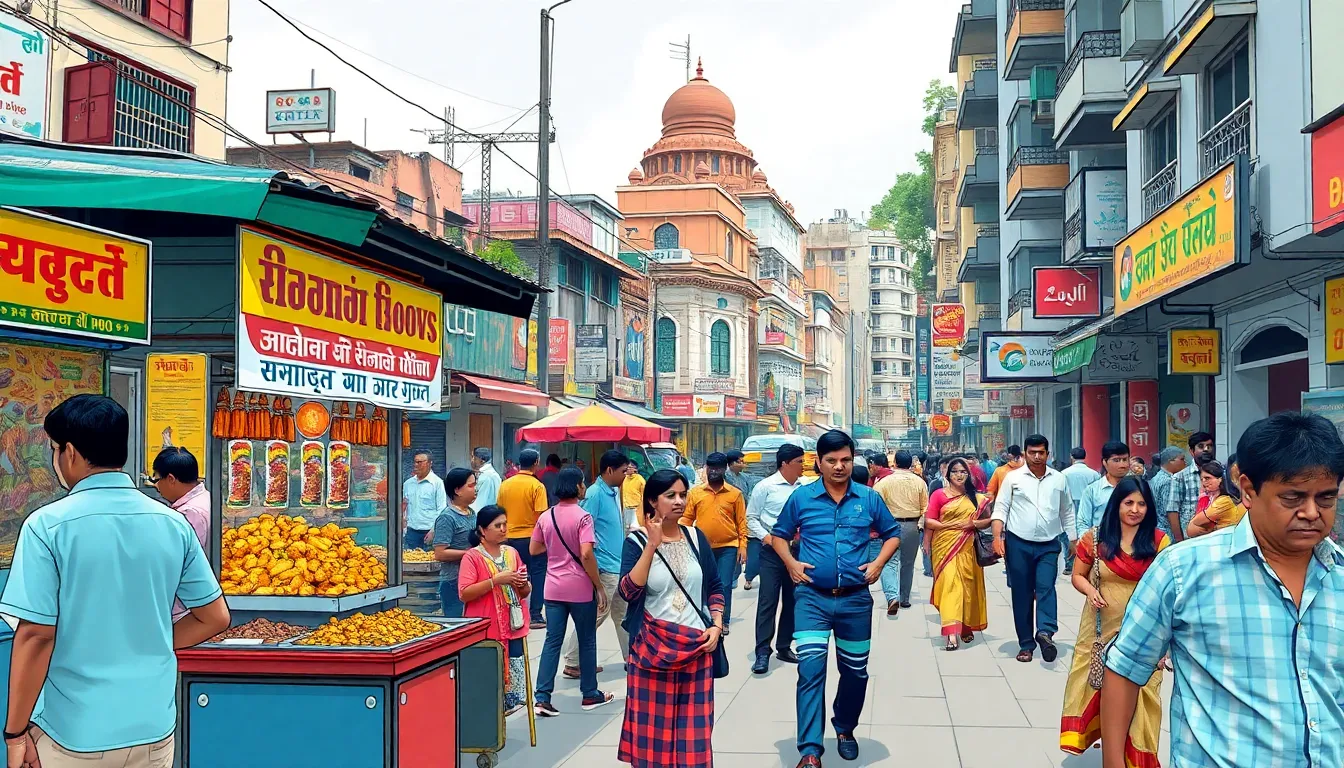When it comes to time, India’s got its own rhythm. While the rest of the world seems to be dancing to a different beat, India proudly marches to its own time zone—Indian Standard Time. But what does that really mean for those trying to connect with friends, family, or business partners in this vibrant country?
Table of Contents
ToggleUnderstanding Time Zones in India
India operates on a single time zone known as Indian Standard Time. This time zone impacts daily life across the vast country, affecting everything from business hours to social interactions.
Indian Standard Time (IST)
Indian Standard Time, or IST, is the time observed throughout India and Sri Lanka. Established at UTC+5:30, IST does not adjust for daylight saving time, maintaining consistent hours year-round. Many Indian cities, including New Delhi and Mumbai, follow this standard. Differences in time zones exist within neighboring countries, which can lead to confusion during communications. Coordinating schedules becomes crucial for ensuring smooth interactions, especially in business.
Difference from UTC
India’s IST is set at UTC+5:30, meaning it is 5 hours and 30 minutes ahead of Coordinated Universal Time. This difference can create challenges for international communication, as other countries may operate on varying UTC offsets. Understanding these differences helps individuals and businesses manage time effectively. For example, when it’s noon in London (UTC+0), it’s already 5:30 PM in India. These nuances in time zones highlight the need for clear communication to avoid misunderstandings.
Importance of Knowing the Time in India

Understanding the time in India holds significant value for successful interactions and planning. India’s single time zone, Indian Standard Time (IST), influences various aspects of life.
Business and Communication
Businesses operate on specific schedules, requiring awareness of IST for effective communication. For instance, coordinating meetings between international partners relies on accurate time conversions. Timing affects deadlines as well; missed opportunities arise from misunderstandings caused by different UTC offsets. Efficient business dealings depend on recognizing the local time, ensuring seamless interactions with clients and colleagues. Global companies must integrate IST into their scheduling to enhance collaboration and avoid confusion during critical negotiations.
Travel and Connectivity
Travel plans necessitate awareness of IST, significantly impacting itineraries. Flights scheduled to and from India follow IST, making it essential for travelers. Delays result from miscalculations related to time zones, leading to potential missed connections. Moreover, local transportation services operate according to IST, affecting arrivals and departures. Ensuring proper planning includes checking local time to maintain a smooth experience. Tourists navigating India gain a better understanding of cultural nuances when they respect the local time.
Tools for Checking the Current Time
Knowing the current time in India is essential for effective communication and planning. Several tools are available to assist with this.
Online Resources
Websites provide accurate time information for India. These platforms often display the current IST alongside world clocks and time zone converters. Examples include worldclock.com and timeanddate.com, both of which offer real-time updates. Users can easily navigate to find the exact time in India. Features such as sunrise and sunset times, as well as differences with various global time zones, add extra value. Being equipped with these details aids in scheduling meetings and coordinating with contacts in India.
Mobile Applications
Mobile applications deliver convenient access to current time information. Users can download apps like Time Buddy or World Clock to receive instant updates on IST. These apps often offer features such as customizable world clocks, allowing users to correlate their local time with India’s time zone. Notifications for time changes can improve planning efficiency, especially for international meetings. Accessing time-related features directly from smartphones simplifies staying on schedule. Many of these applications also operate offline, ensuring reliability even without internet access.
Regional Variations in Time Awareness
India’s diverse landscape influences how people perceive and practice time. Urban areas exhibit different attitudes towards time compared to rural settings.
Time Practices in Major Cities
Major cities like Mumbai, Delhi, and Bengaluru follow Indian Standard Time (IST) closely, ensuring synchronization with national business hours. In bustling financial hubs, punctuality holds great significance. Many professionals adhere to strict schedules, reflecting a fast-paced lifestyle. Meetings and appointments typically start on time, with delays often viewed unfavorably. Public transportation systems in these cities operate on clock-based schedules, making awareness of IST essential for commuters. Additionally, cultural events and social gatherings also align with this time zone, emphasizing the importance of timely attendance.
Time Perception in Rural Areas
Rural areas manifest a more relaxed approach towards time, with individuals often prioritizing natural rhythms over clock time. Farming communities, for instance, base their daily activities on sunrise and sunset rather than a specific hour. As a result, social gatherings and events may start later, depending on daily needs and local customs. In these regions, flexibility influences time perception. People may use general terms like “morning” or “afternoon” instead of precise hours. This relaxed attitude fosters a sense of community, allowing for spontaneous interactions and deeper connections among residents. Understanding these differences proves vital for effective communication between urban and rural populations.
Understanding the time in India is essential for anyone engaging with the country. Whether for business or personal connections knowing Indian Standard Time can prevent confusion and enhance communication. The unique approach to time reflects India’s diverse culture and influences daily life across urban and rural areas.
Utilizing available tools for checking the current time can streamline scheduling and improve planning efficiency. As travelers and professionals navigate this landscape respecting local time fosters smoother interactions and deeper cultural appreciation. Embracing these nuances ultimately leads to more successful experiences in India.



